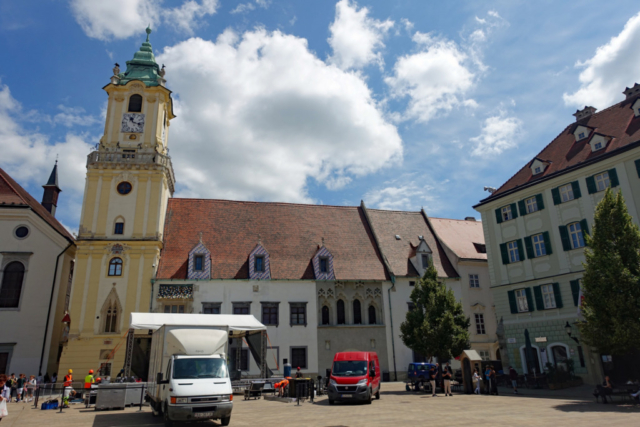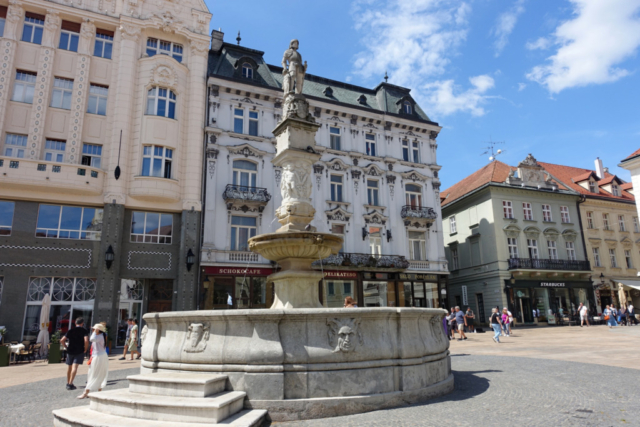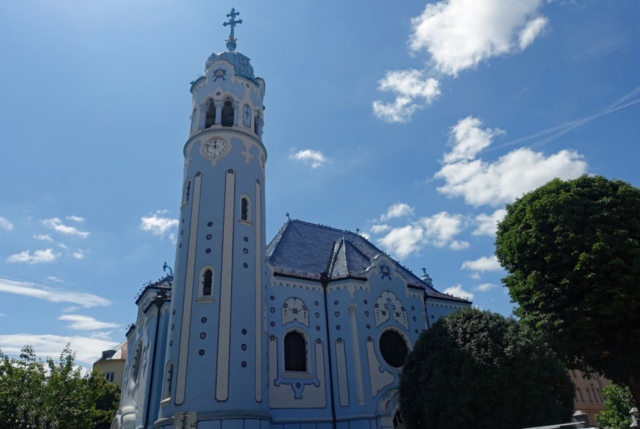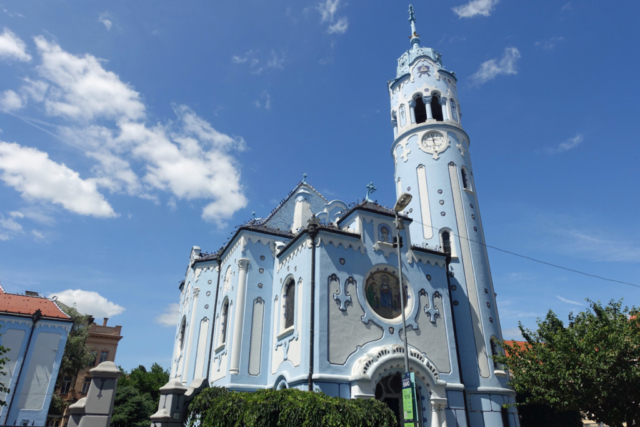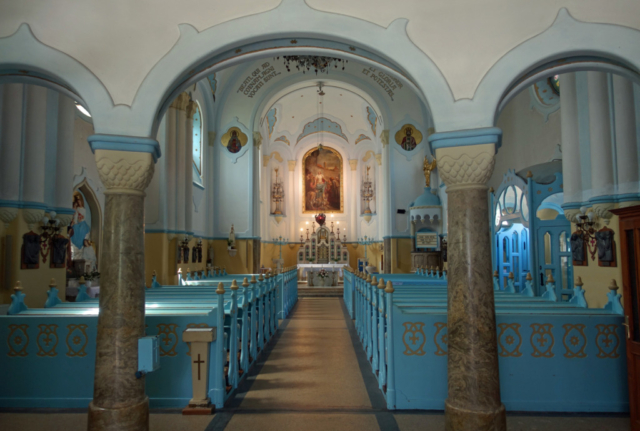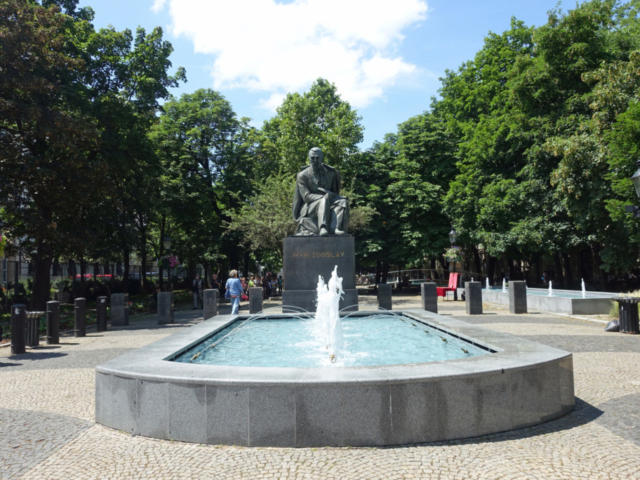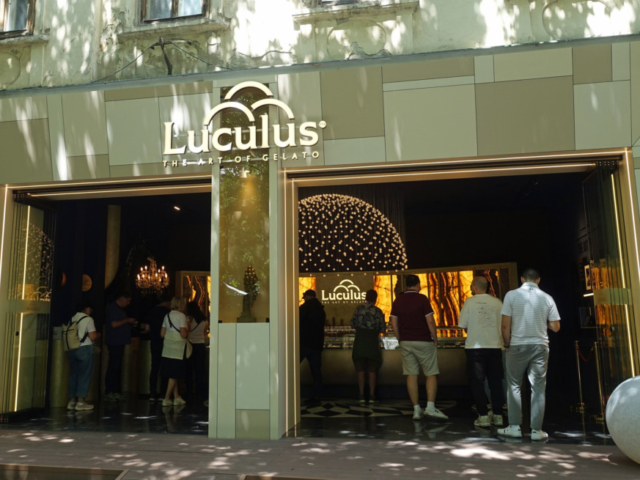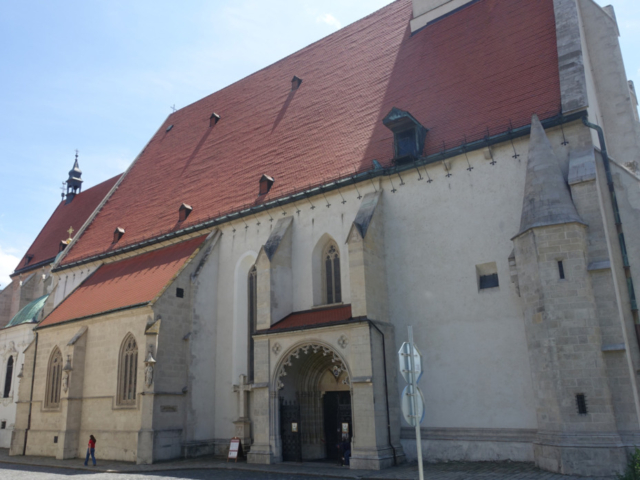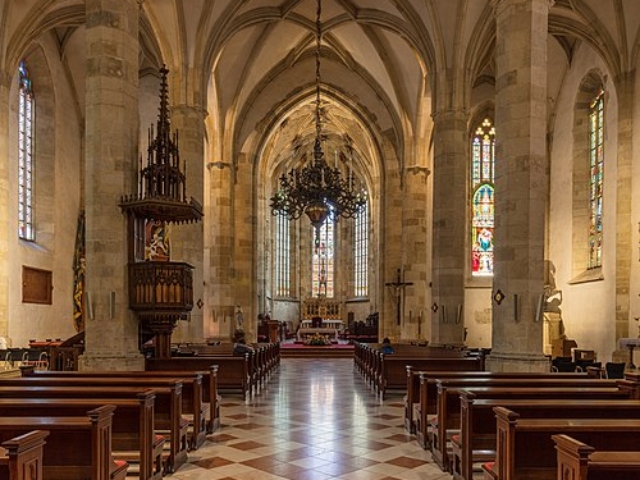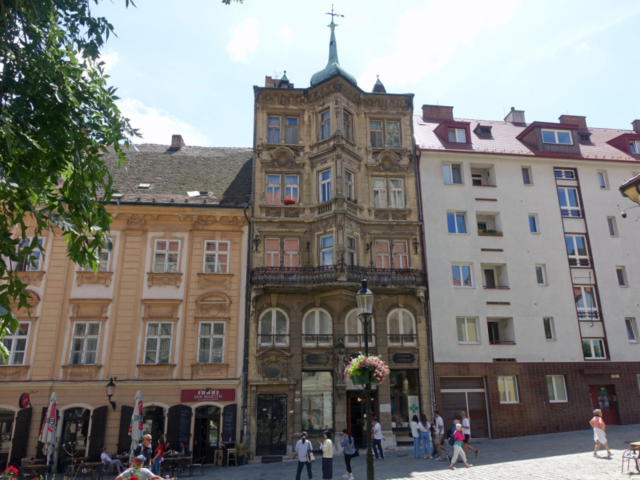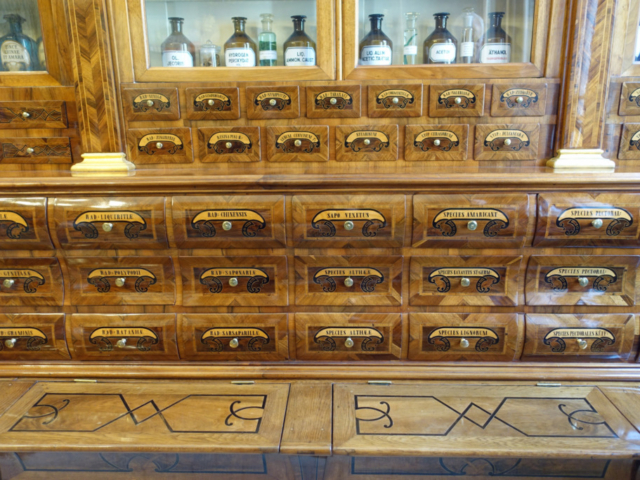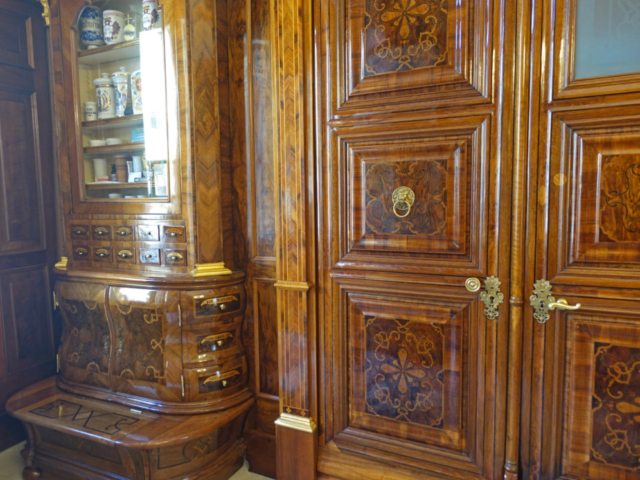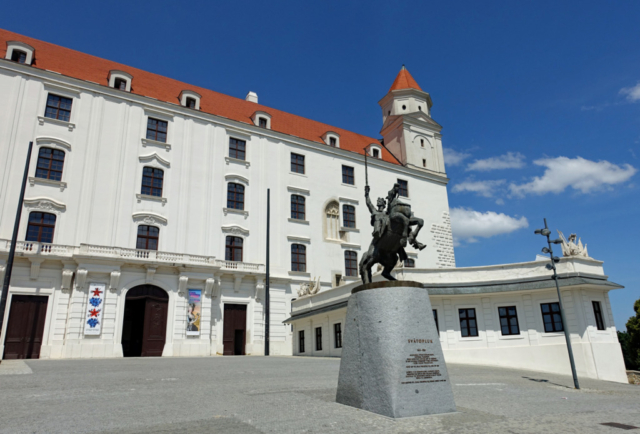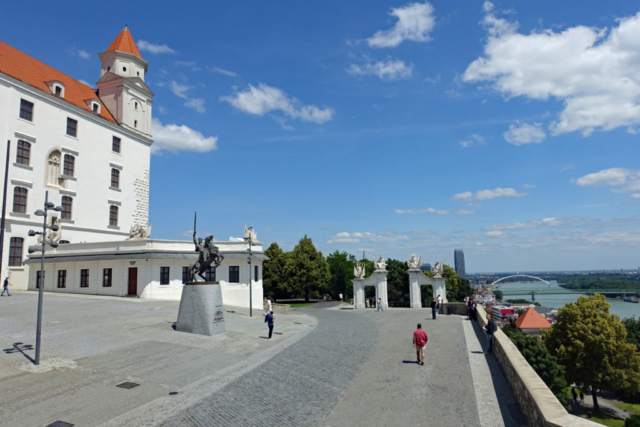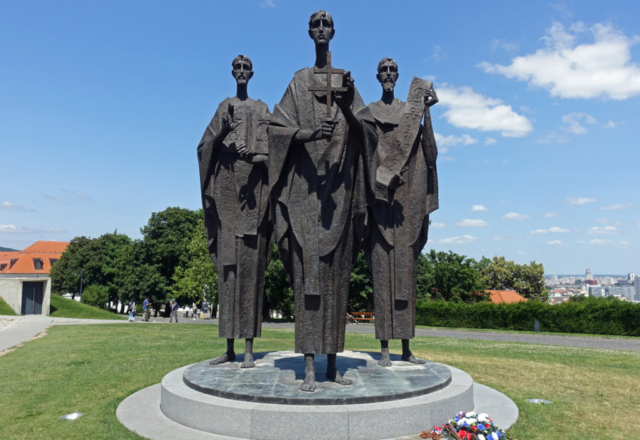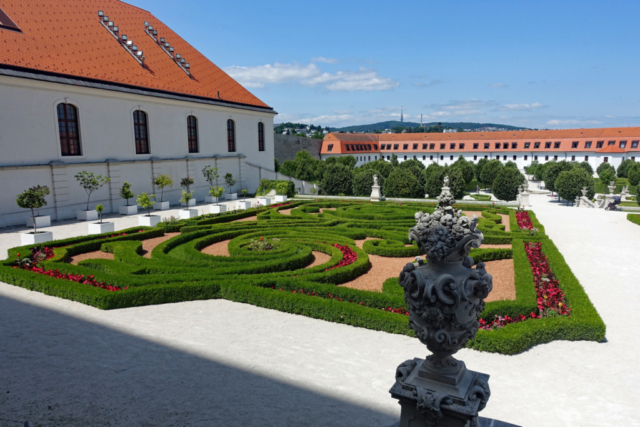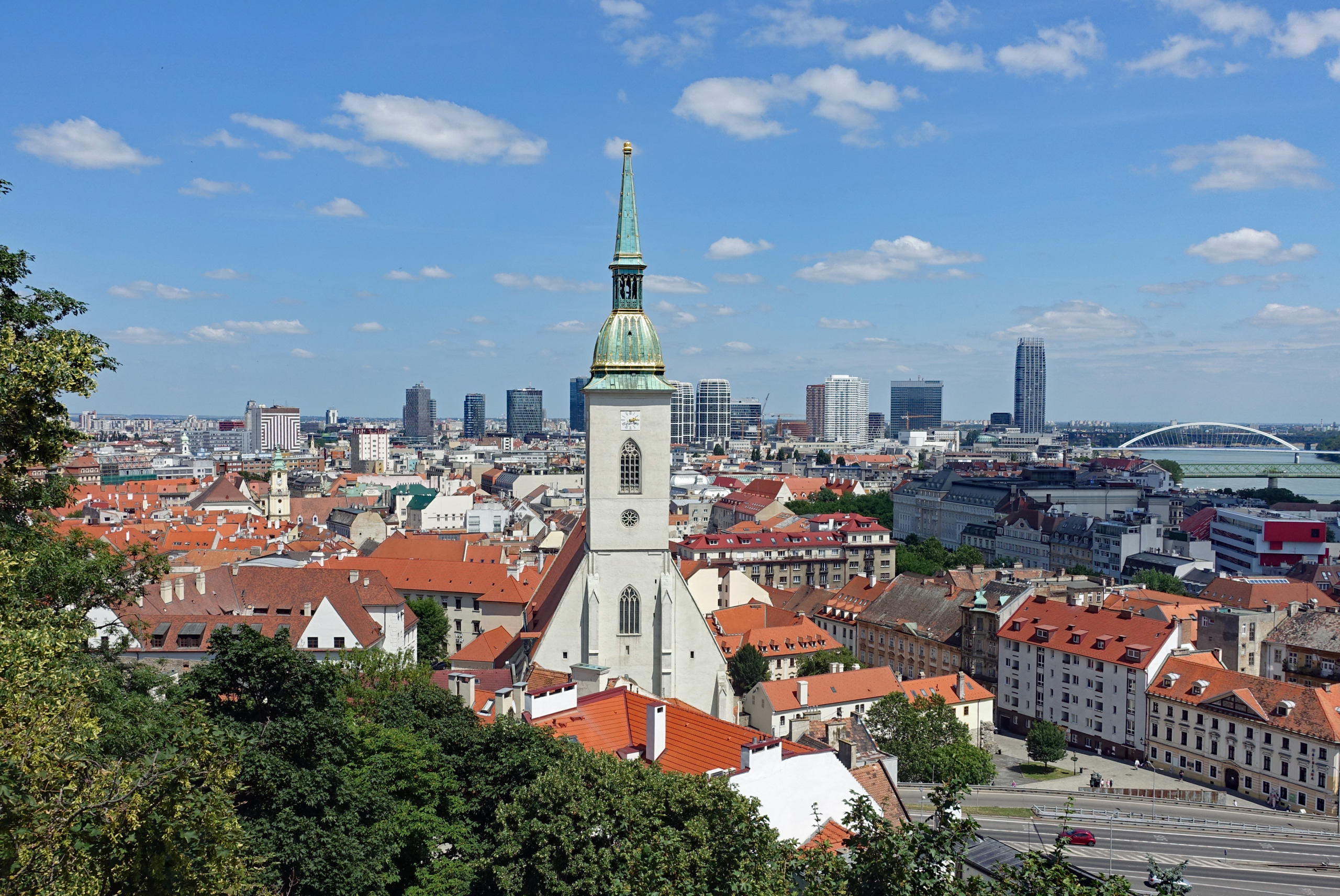
While in Vienna we went for a day trip to Bratislava, the capital city of Slovakia, and only an hour away by train. It’s one of Europe’s smaller capitals, but that’s part of its charm, its very walkable, relaxed and full of history. Like the rest of Europe, Slovakia has a tumultuous history and has been ruled by many empires. In the 10th century Bratislava was part of the Kingdom of Hungary and in 1536 became the capital and coronation city of Hungarian kings for almost 300 years. The city flourished under the Habsburg era from the 16th to the 19th centuries. After the dissolution of the Austro-Hungarian empire the city became part of Czechoslovakia in 1918, then part of communist Czechoslovakia in 1945 until 1993. In 1993 Czechoslovakia split into the Czech Republic and Slovakia, and Bratislava became the capital of Slovakia. The city is an interesting mix of medieval charm, baroque elegance, communist era scars and modern vibrancy. We thoroughly enjoyed our one day visit to Bratislava.
Using The Man in Seat Sixty-One website we determined that ÖBB had trains running every hour between Vienna and Bratislava and if we bought a Bratislava Ticket it included the return train trip and city transit in Bratislava, the ticket cost 18 Euros (USD $20.70) each. The train cars are all 2nd class with no reserved seating, but they were not busy so we had no problem getting seats. Exiting at the Bratislava-Petrzalka train station we hopped on bus #93 which took us directly to the Presidential Palace where we began our city walk. Prior to leaving Vienna we created a walking route of Bratislava in Google Maps.
The Presidential Palace was built in 1760 as the summer residence of Count Anton Grassalkovich. It was passed down through the family until 1919 when it became a property of the state. It was restored in 1996 then became the official residence of the Slovak President. It is not open to the public and the palace is guarded by the Honor guard, similar to the well-known Queen’s Guard in London. In front of the palace is the Planet of Peace fountain, a symbol of freedom and harmony between nations.
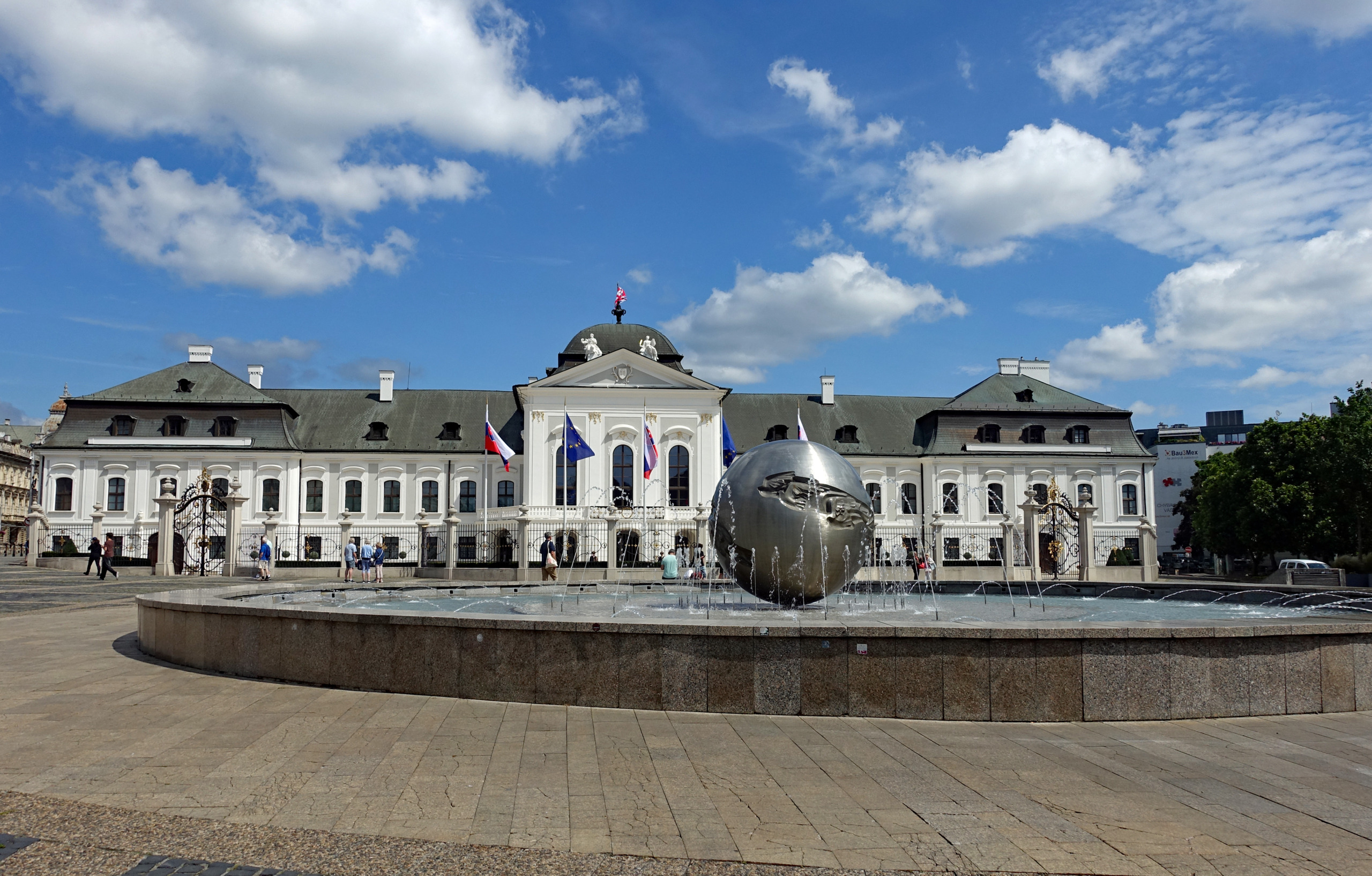
Michael’s Gate is the only surviving gate of the four original ones that has been preserved from the medieval fortifications, it ranks among the oldest town buildings. Built around the year 1300, it was demolished in the 16th century by Turkish troops then rebuilt in its current Baroque design in 1758. The gate got its name as the Church of St Michael stood just outside the city walls here. The street leading from the gate is lined with luxury shops, bars and cafes.
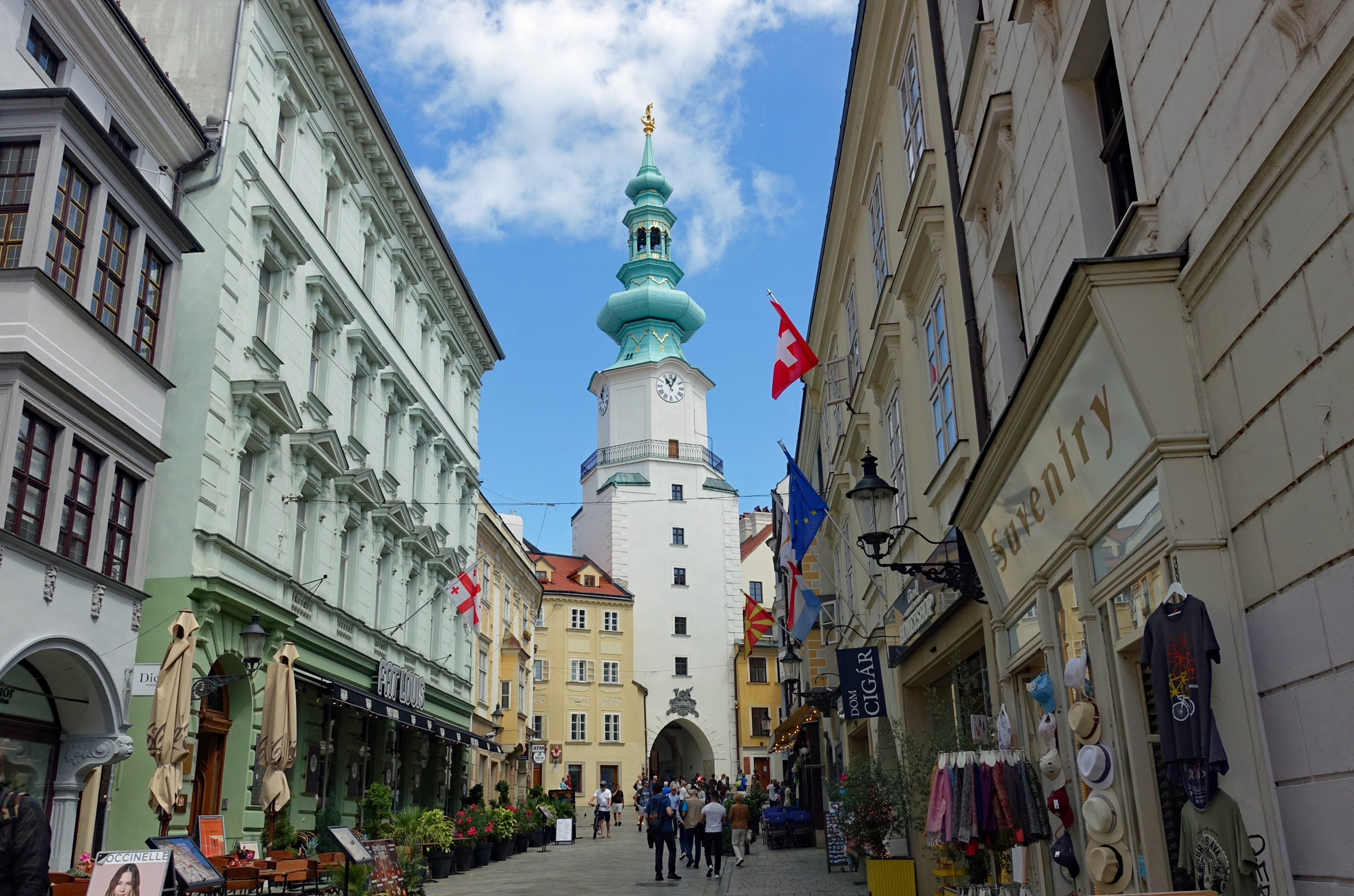
Hlavne namestie (literally main square) is one of the best known squares in Bratislava and considered to be the center of the city. The square is surrounded by beautiful old buildings and in the center is the Roland Fountain, built in 1572 and the oldest fountain in Bratislava. There are a few embassies in the square but the main landmark is the old Town Hall building, one of the oldest stone buildings still standing in Bratislava, with the tower built around 1370.
Cumil is a whimsical bronze statue of a Slovakian sewer worker poking out of a manhole. The statue was created by Slovak sculptor Viktor Hulik and installed in 1997. It was part of a series of humorous sculptures placed around the city to add a touch of fun to the urban landscape. Cumil has captured the hearts of locals and tourist alike and rumor has it if you rub his head you will have good luck, and if you rub his nose you will get pregnant. I rubbed his head 😂
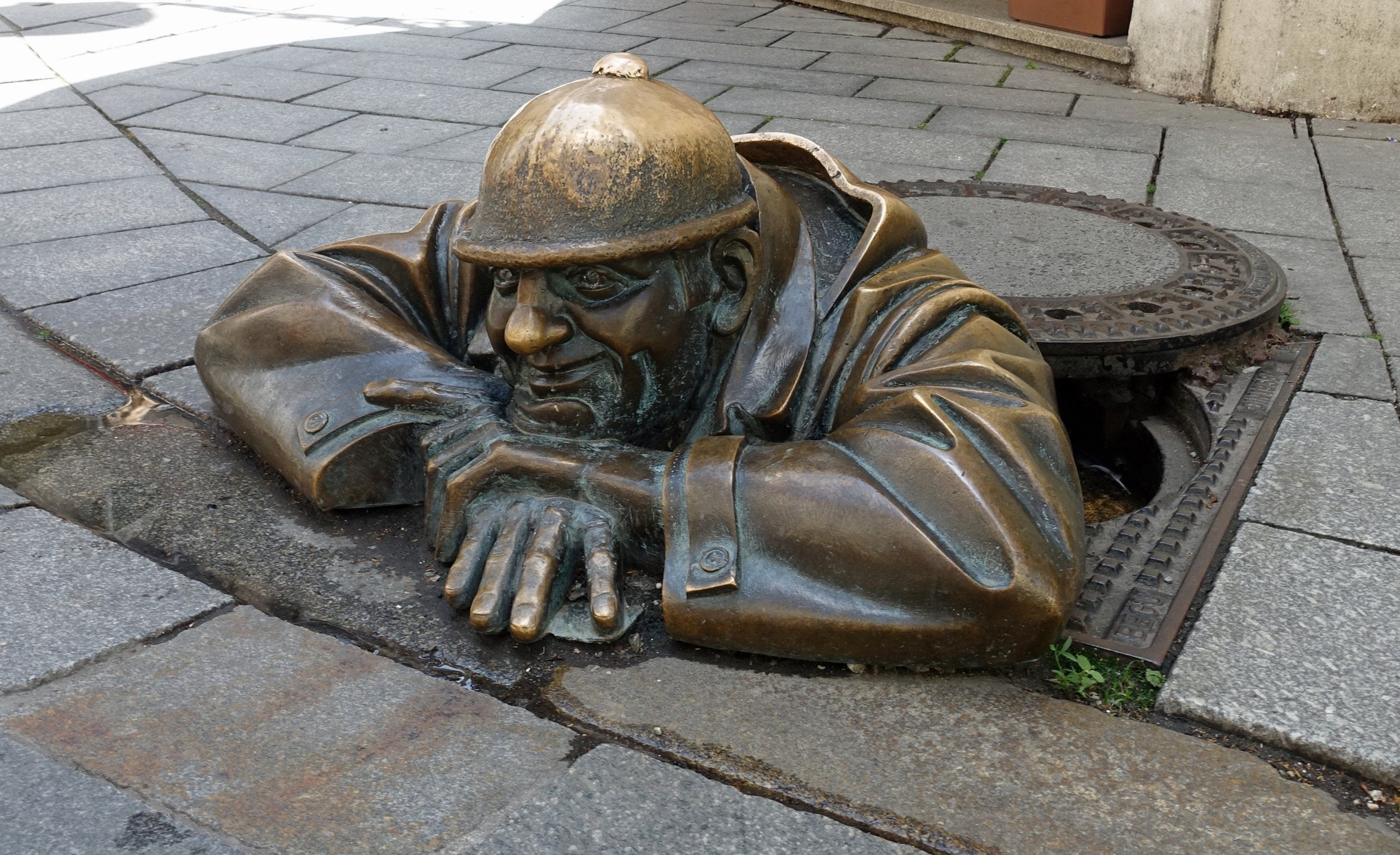
The Blue Church looks like it was plucked from a fairy tale and is Bratislava’s most appealing art nouveau building. The church was completed in 1913, painted in shades of pale blue and decorated with blue majolica, even the roof is tiled with blue-glazed ceramics. The color scheme continues with the interior painted in shades of pale blue.
The Slovak National Theater Building was built in the Neo-Renaissance style from 1885-1886 during the time of the Austro-Hungarian Empire. The building is currently closed for reconstruction but typically hosts opera and ballet productions. In front of the building is the beautiful Ganymede Fountain, built in 1888.
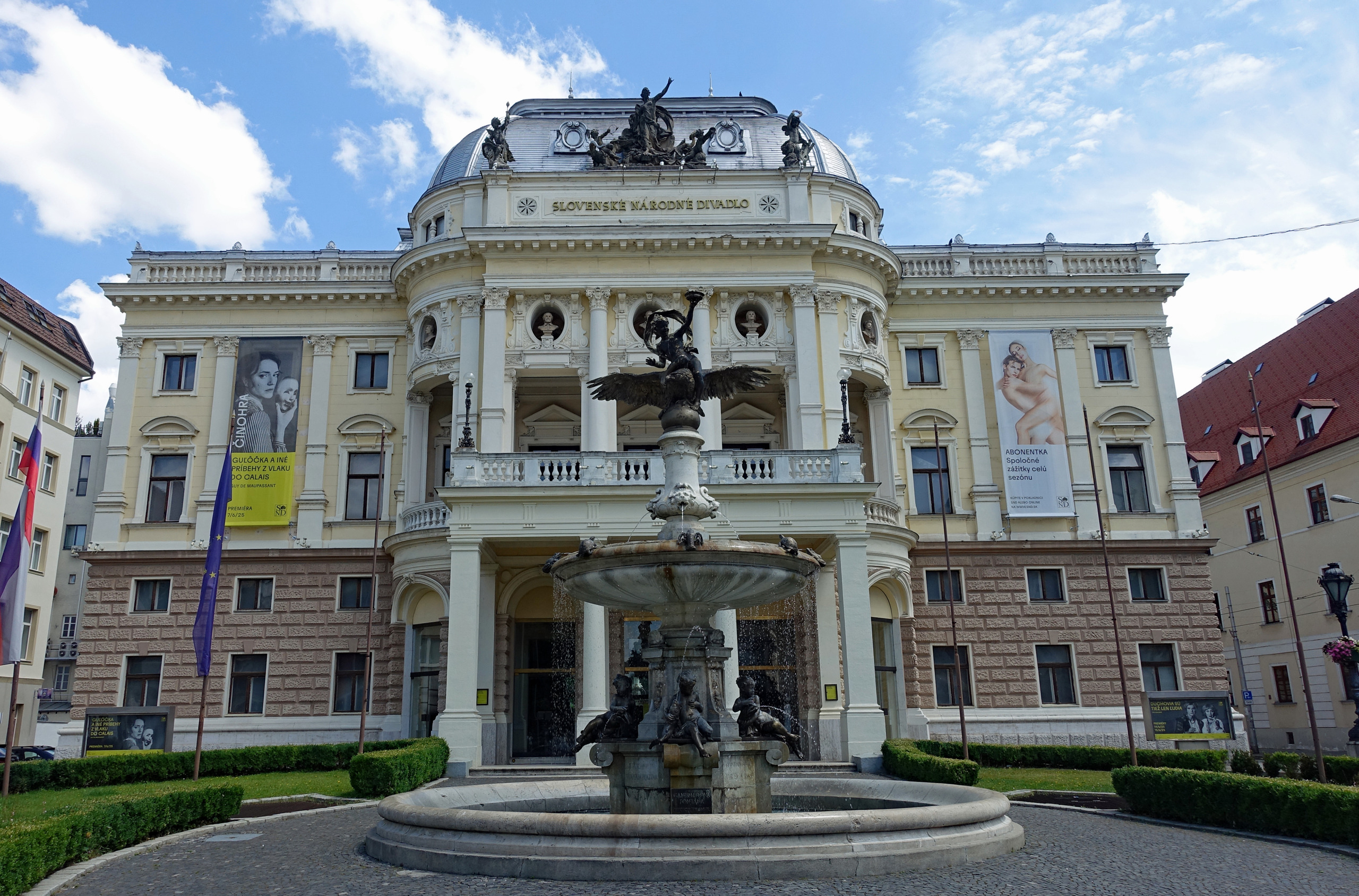
Leading away from the theater building is a lovely two block long park named after Slovak poet Pavol Országh Hviezdoslav. The park is a popular place for locals and tourists alike, lined with cafes, restaurants and fancy looking gelato shops.
St. Martin’s Cathedral is a 13th century Gothic/Romanesque Catholic church with a rich coronation history. It is the largest and one of the oldest churches in Bratislava, known for being the coronation church of the Kingdom of Hungary between 1563 and 1830. This is marked by a 300 kg gilded replica of the Hungarian royal crown perched on top of the cathedral’s tower. Ten kings, one queen and seven royal wives from the Habsburg Dynasty were crowned in St. Martin’s Cathedral. While the exterior is fairly stark, the spire dominates the skyline of the old town. We were not able to take photos of the inside because a service was going on, but I did find the below photo on the internet.
Behind the cathedral is the Salvator Pharmacy, one of the most photographed buildings in the historic center of the city. The pharmacy was founded in the 17th century but was located in this building since 1904. After the death of the the pharmacy owner in 1906 the building fell into disrepair was not re-opened until 2024. The interior has been restored and the 300 year old baroque cabinets returned. Its quite stunning inside and functions as a real pharmacy now.
The Bratislava Castle sits high on a hill above the Danube river and the old city center. The castle was built from the 9th to the 18th centuries and rebuilt between 1956-1964 after sitting abandoned for 150 years. The building has a rather plain exterior but is surrounded by large gardens and has excellent views of Bratislava as well as Austria and Hungary. There is an interesting sculpture in the gardens of 9th century Byzantine Missionaries credited for bringing Christianity to the Slavic people. Saints Cyril, Methodius and Gorazd are symbols of unity among the Slavic nations.
Walking down the cobbled streets from the castle two items caught my attention. The first one was a chalkboard outside a small cafe that I found quite amusing. The second was a bronze sculpture of a large headed boy, it is called Pičus and was created by local artist Viktor Frešo. The oversized head with an exaggerated angry or smug expression represents a kind of satirical take on arrogance, inflated egos, or human vanity. I did not rub the small shiny area 😂
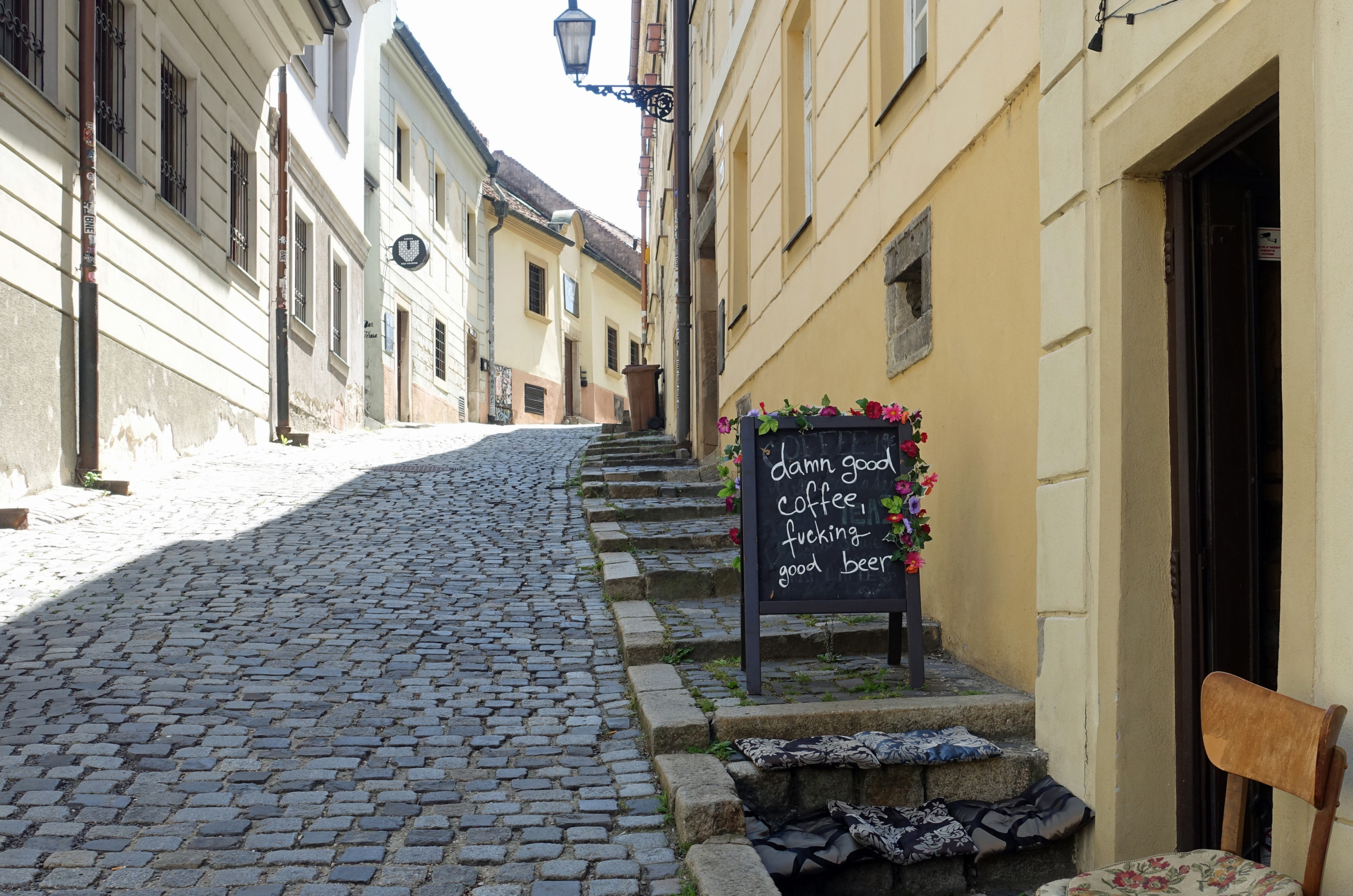
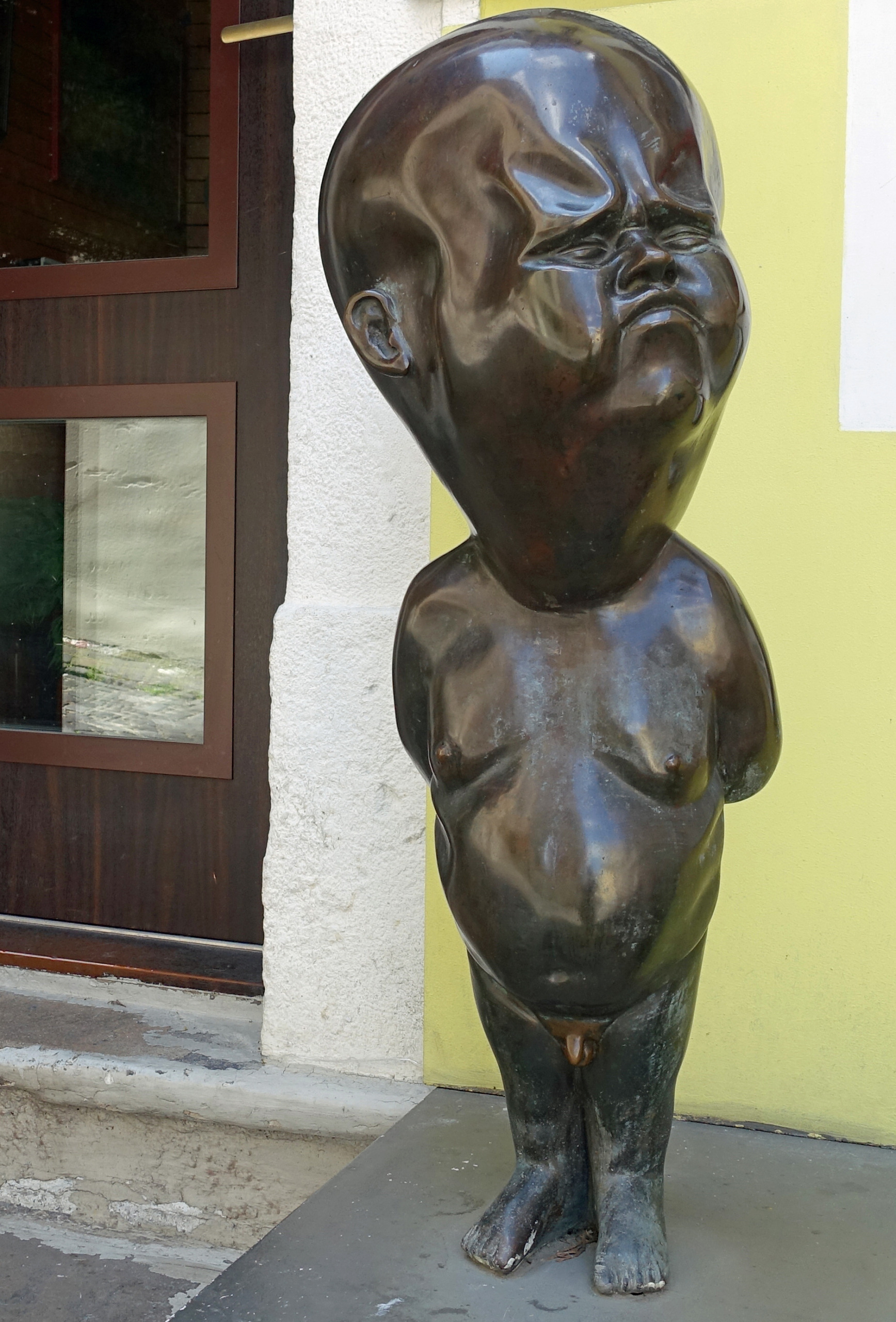
We had a fabulous time and highly recommend a day trip, or longer, visit to Bratislava.
